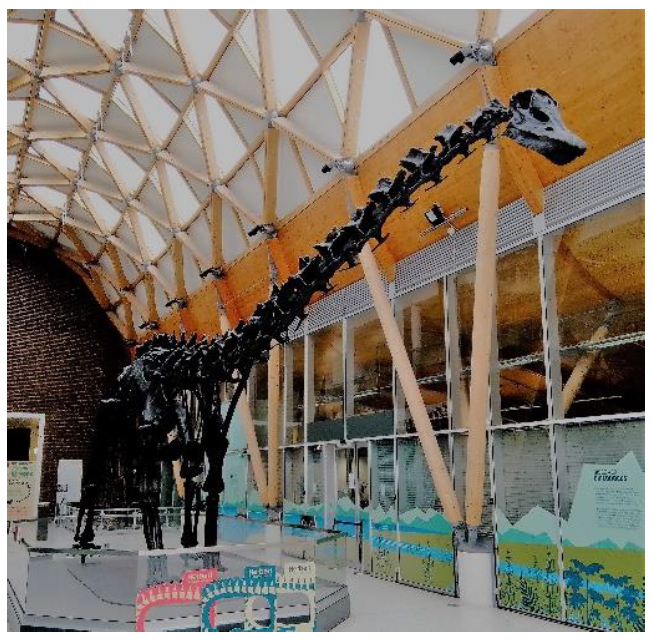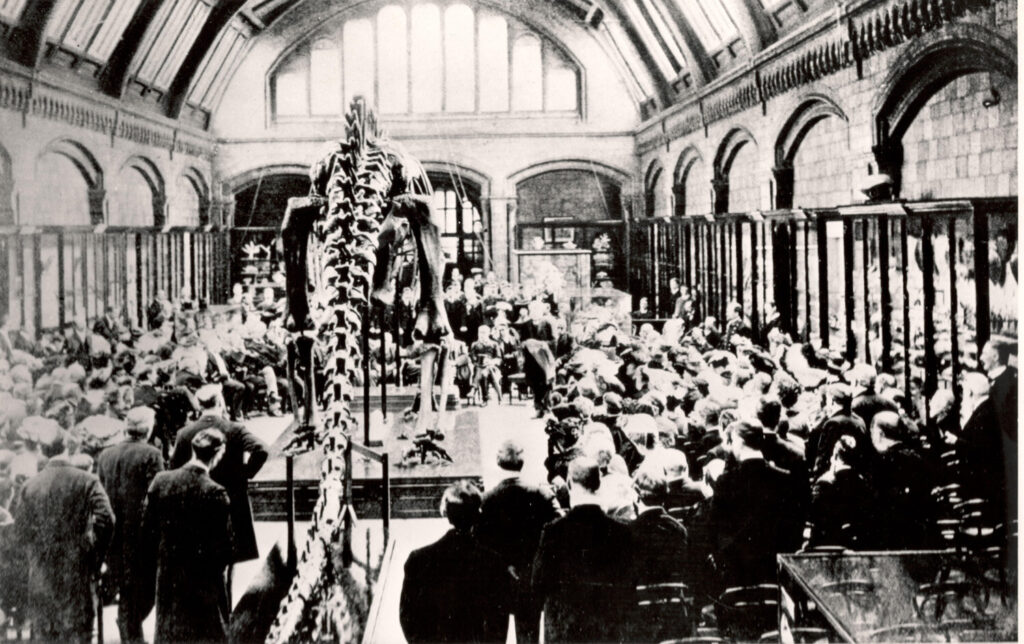CovSoc member and Chair of the Stoke History Group, John Marshall, shares a story published in Jabet’s Ash, the group’s newsletter last month. John writes…..

Hundreds of children (and adults) have flocked to Coventry over the last few months to see Dippy the Dinosaur at the Herbert Art Gallery and Museum. But did you know that this famous replica of a dinosaur, formerly housed at the National History Museum in London, has a direct connection with Andrew Carnegie, the celebrated philanthropist who gave three public libraries to Coventry?
Dippy, on loan at the Herbert until 2026, is an exact replica of a real dinosaur, the fossilised bones of which were discovered by railroad workers in Wyoming, USA, in 1899. Subsequent excavations were funded by Andrew Carnegie, who acquired the bones as a centrepiece for his new museum in Pittsburgh – the Carnegie Museum of Natural History. We are told that during the reconstruction of the skeleton at the Carnegie Museum, experts discovered subtle differences from the two other Diplodocus species known at the time, Diplodocus longus and Diplodocus lacustris. The new species was therefore named Diplodocus carnegii, in honour of Andrew Carnegie.
The story goes that King Edward VII saw a sketch of the Diplodocus while visiting Carnegie at his Scottish castle and remarked how much he would like a similar specimen for the Natural History Museum. Carnegie obliged by commissioning a giant replica cast of his dinosaur and gifting it to London. The 292-bone skeleton, nicknamed Dippy, caused a sensation when it first arrived in the UK.

It was unveiled to the public in a lavish ceremony for 300 people, on 12 May 1905, and for many years was the first thing seen by visitors when they entered the London museum. After more than 110 years on display in London, the Natural History Museum announced that Dippy would be going on a tour of the UK. Conservators spent 12 months preparing the delicate plaster-of-Paris cast for its journey, and it was seen by over two million visitors during its whirlwind tour.
But Dippy is now taking a rest at the Herbert Art Gallery in Coventry – where it will stay on loan for three years. Entry to the museum is free, though booking is advised.
Diplodocuses were giant dinosaurs, like the brontosaurus, and were some of the largest creatures to exist at the time. They were first described as a new type of dinosaur in 1878 by Professor Othniel C Marsh at Yale University. The species lived sometime between 145 and 156 million years ago and belong to a group called sauropods, meaning ‘lizard feet’.
Information sourced largely from the Natural History Museum. For interesting additional reading, see article ‘Andrew Carnegie’s dinosaur diplomacy continues to inspire’, available on the website of the Carnegie Corporation of New York. We previously published an article from a previous edition of Jabbett’s Ash which gave an account of Carnegie’s visit to Coventry in 1914.
